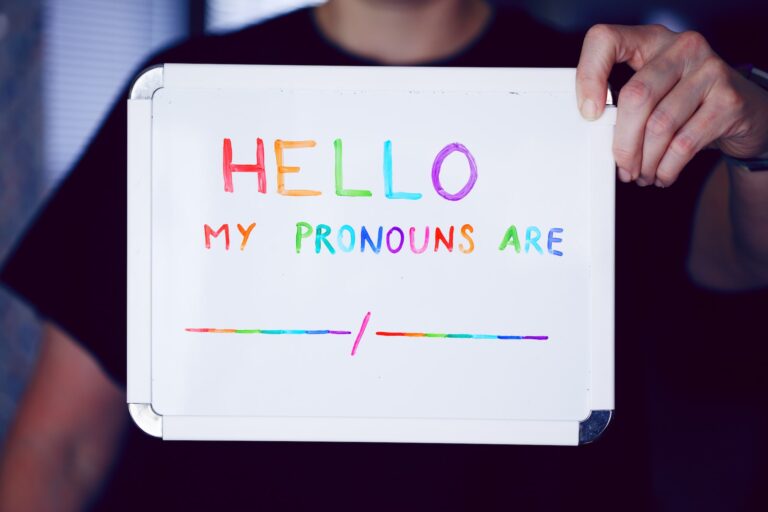Introduction
Reflexive pronouns are words that refer back to the subject of a sentence, indicating that the subject acts on itself. These pronouns end in “-self” or “-selves” in English and are used to show actions where the subject and the object are the same entity. Examples include “myself,” “yourself,” “himself,” “herself,” “itself,” “yourself,” “yourselves,” and “themselves.” Reflexive pronouns are essential for indicating actions of self-reference or mutual actions within a sentence.
Reflexive pronouns play a crucial role in language by helping to convey actions that involve the subject and the object being the same entity. Let’s delve deeper into their characteristics and usage:
Formation of Reflexive Pronouns:
- Reflexive pronouns are formed by adding the suffix “-self” or “-selves” to certain personal pronouns. The specific reflexive pronoun used depends on the person and number of the subject in the sentence.
- Singular:
myself (first person singular)
yourself (second person singular)
himself, herself, itself (third-person singular)
- Plural:
ourselves (first person plural)
yourselves (second person plural)
themselves (third person plural)
Indicating Reflexivity:
- Reflexive pronouns are employed to show that the action of the verb reflects back on the subject. In other words, the subject is both the doer and the receiver of the action. This is especially useful when emphasizing a sense of self or mutual action.
- Example 1: I cut myself while chopping vegetables.
In this sentence, the reflexive pronoun “myself” emphasizes that the action of cutting is performed by the subject (I) on the same entity (I).
- Example 2: The cat cleaned itself.
Here, “itself” indicates that the cat is both the doer and the receiver of the cleaning action.
Avoiding Ambiguity:
- Reflexive pronouns also help in avoiding ambiguity in sentences. Without them, it might be unclear whether the action is directed toward oneself or someone/something else.
- Example 3: She talked to herself in the mirror.
The reflexive pronoun “herself” clarifies that the conversation is internal, and she is talking to herself.
Reciprocal Actions:
- Reflexive pronouns are used to express reciprocal actions, where two or more people are involved in an action directed towards each other.
- Example 4: They congratulated themselves on a job well done.
In this case, “themselves” indicates that the mutual action of congratulating is directed back to the group.
Emphasis and Intensity:
- Reflexive pronouns can also be used for emphasis, emphasizing the self-involvement or intensity of the action.
- Example 5: He himself built that entire bookshelf.
The reflexive pronoun “himself” adds emphasis to the fact that he, and no one else, built the bookshelf.
5 More examples of Reflexive Pronouns Usage:
- She found it difficult to believe that she had accomplished the task all by herself.
In this sentence, the reflexive pronoun “herself” emphasizes that she accomplished the task independently.
- The team members congratulated one another on successfully completing the project ahead of schedule. They were proud of themselves.
Here, “themselves” is used to express the mutual feeling of pride among the team members.
- After the long journey, Sarah treated herself to a relaxing spa day.
The reflexive pronoun “herself” indicates that Sarah treated herself, emphasizing self-care after a tiring journey.
- You need to believe in yourself to overcome challenges and achieve your goals.
In this sentence, the reflexive pronoun “yourself” emphasizes the importance of self-belief in facing challenges.
- The child was so excited about the birthday party that he couldn’t help but talk to himself about all the presents he hoped to receive.
Here, “himself” indicates the child’s internal dialogue as he anticipates the birthday party and thinks about the presents.
Misuse of reflexive Pronouns
However, reflexive pronouns are often misused, leading to grammatical errors and confusion in communication. These pronouns are intended to reflect the action of the subject back onto itself, but many individuals inadvertently employ them incorrectly. Here are eight examples of reflexive pronoun misuse:
- Incorrect: John and myself completed the project last week.
- Correction: John and I completed the project last week.
- Incorrect: The manager asked Tom and myself to attend the meeting.
- Correction: The manager asked Tom and me to attend the meeting.
- Incorrect: We enjoyed the concert as much as ourselves.
- Correction: “We enjoyed the concert as much as everyone else.
- Incorrect: After the game, the players awarded trophies to themselves.
- Correction: “After the game, the players awarded trophies to each other.
- Incorrect: Jake and myself went to the store.
- Correction: Jake and I went to the store.
- Incorrect: Please save a seat for John and myself.
- Correction: Please save a seat for John and me.
- Incorrect: Maria and himself are working on the project.
- Correction: Maria and he are working on the project.
- Incorrect: The teacher gave an assignment to the class and myself.
- Correction: The teacher gave an assignment to the class and me.
Conclusion
In summary, reflexive pronouns serve as linguistic tools that help convey actions of self-reference, mutual actions, and add clarity to sentences by specifying that the subject is also the object of the action. Their usage is integral to effective communication in English and contributes to the precision and nuance of language.
Click on the link below to learn more about English grammar.
https://fluent-eng.com/whos-versus-whose-with-examples/
Click on the link below to book a lesson with me on Preply:
preply.com/en/tutor/662190/

